Most years, the early spring cleanup is drudgery, an unpleasant several days of mind numbing chores. All over again, I can hear my mother’s voice demanding “make your bed”, “clean your room”, or “take out the trash. NOW”. And like a petulant, sixty-six year old child, I stomp my feet and pout until I’m otherwise distracted. Fortunately, in the garden this mood changes in moments, but then there’s more to be done and never mind the hellebores (below).
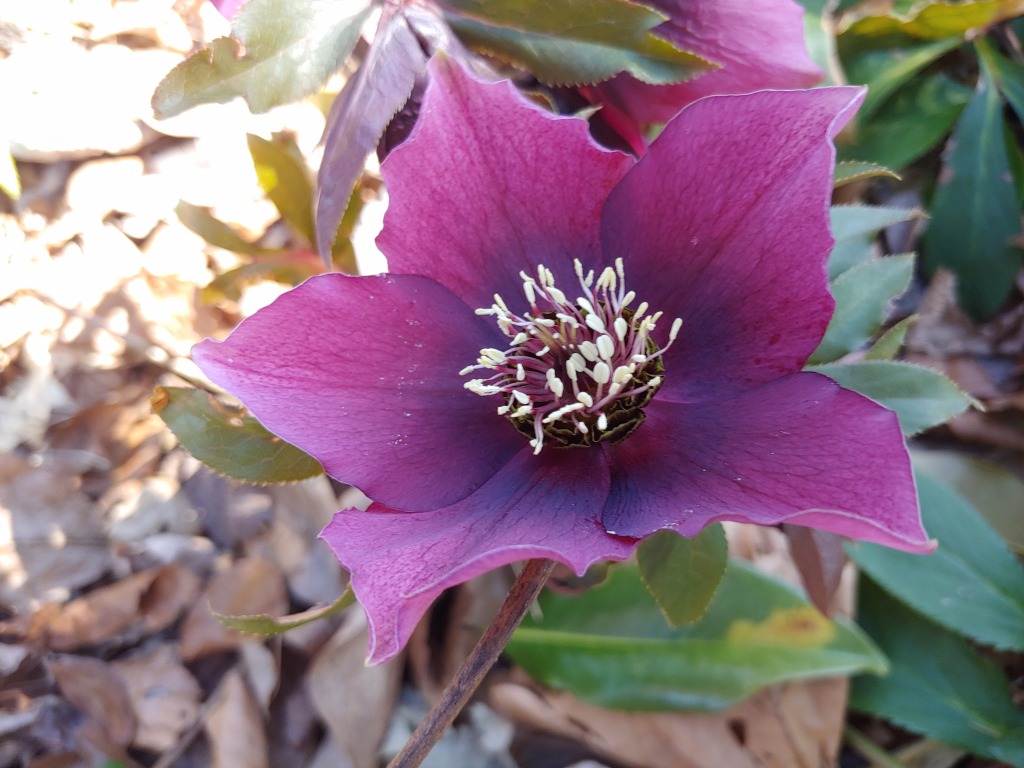
This weekend was somewhat different in the way that everything is different in our world that has been disrupted by virus precautions. My vaccine was scheduled for Saturday at half past noon, and since my wife felt pretty rotten for a few days after her first shot several weeks ago, I went out in the morning as soon as it warmed above freezing to get done whatever I could since it was possible nothing would get done in the afternoon.
The vaccine went quickly and efficiently, and I didn’t feel a thing. I figured at least a sore arm was still to come, but after lunch I hurried outdoors and got to work, motivated as much to prove to my wife that nothing can stop me as by my anxiousness to get the garden cleanup over and done with. And so, there was no grumbling, and hardly a moment to rest since I figured that as soon as I sat down the after effects would put an end to my day’s efforts. I came in at dusk.
So, I hardly had time to feel sorry for myself, and by day’s end most of the clutter was cleaned. Better yet, rather than leaving behind piles of debris to be picked up another day, everything was hauled to the compost pile. That almost never happens. My wife even complimented that the cleanup was going well. That never happens.
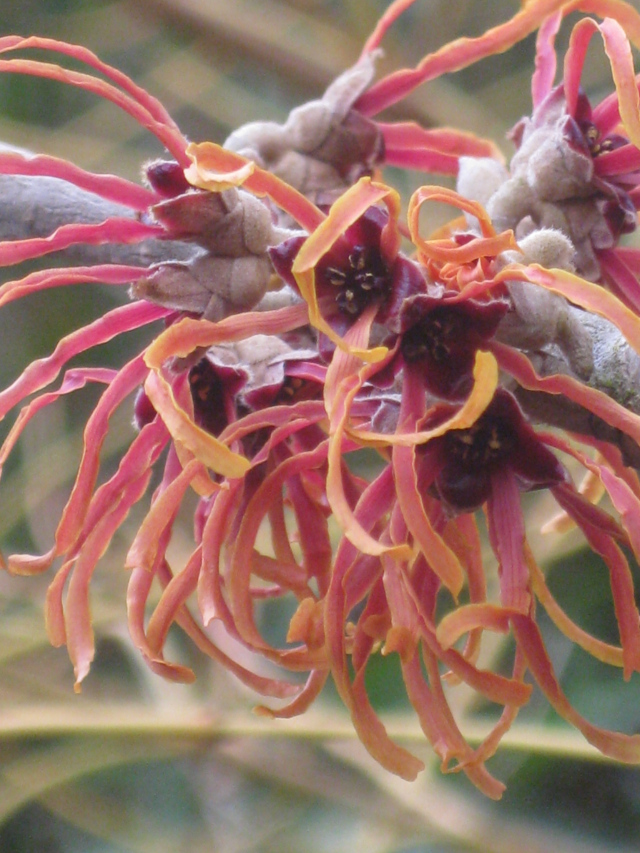
On Sunday, I woke to a minor sore arm, thanks to the vaccine, and a sore back, no thanks to overdoing things the day before. After a leisurely start to the day, my old man’s back was feeling pretty good, so I was back at work, but now at a slower pace with so much accomplished yesterday. Now I could crawl around to lift nodding flowers of hellebores, and while I’ve never been able to enjoy the scent of the garden’s witch hazels (‘Jelena’ above), I visited every one of them several times since they’ve just come to their peak bloom.

I noticed recently that the slow growing sweetbox (Sarcococca hookeriana var. humilis, above and below) was invading a nice clump of golden Japanese Forest grass (Hakonechloa macra ‘Aureola’). While sweetbox tests your patience early after planting, it spreads slowly but relentlessly, and now it was intermingled with the Forest grass and was gaining ground. The Forest grass would lose this fight, so something must be done.
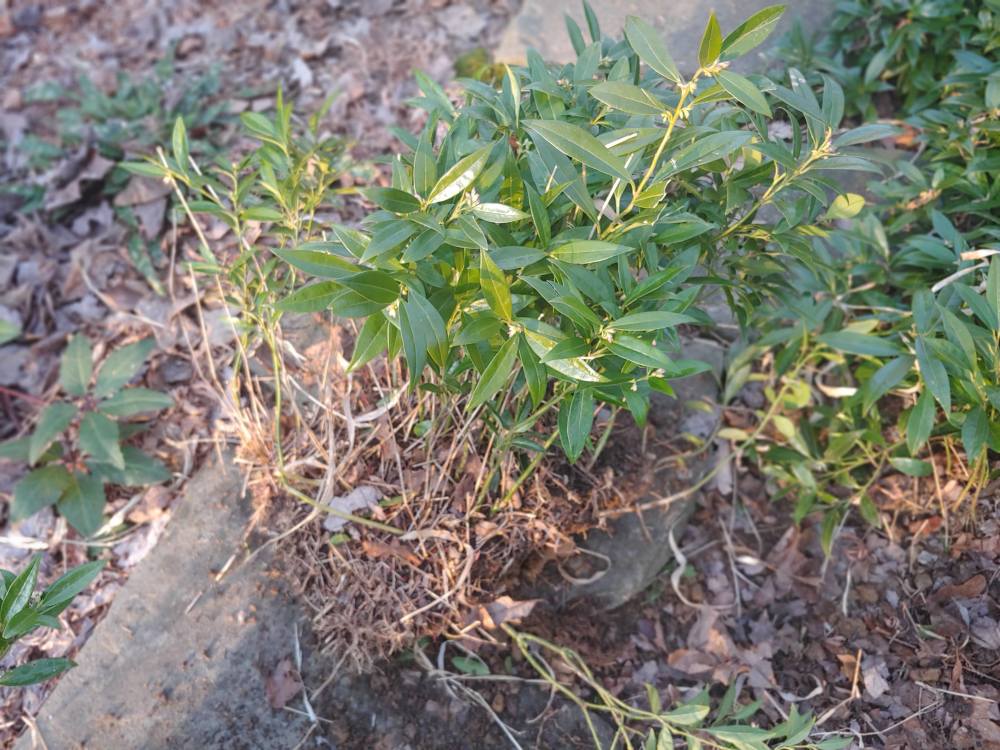
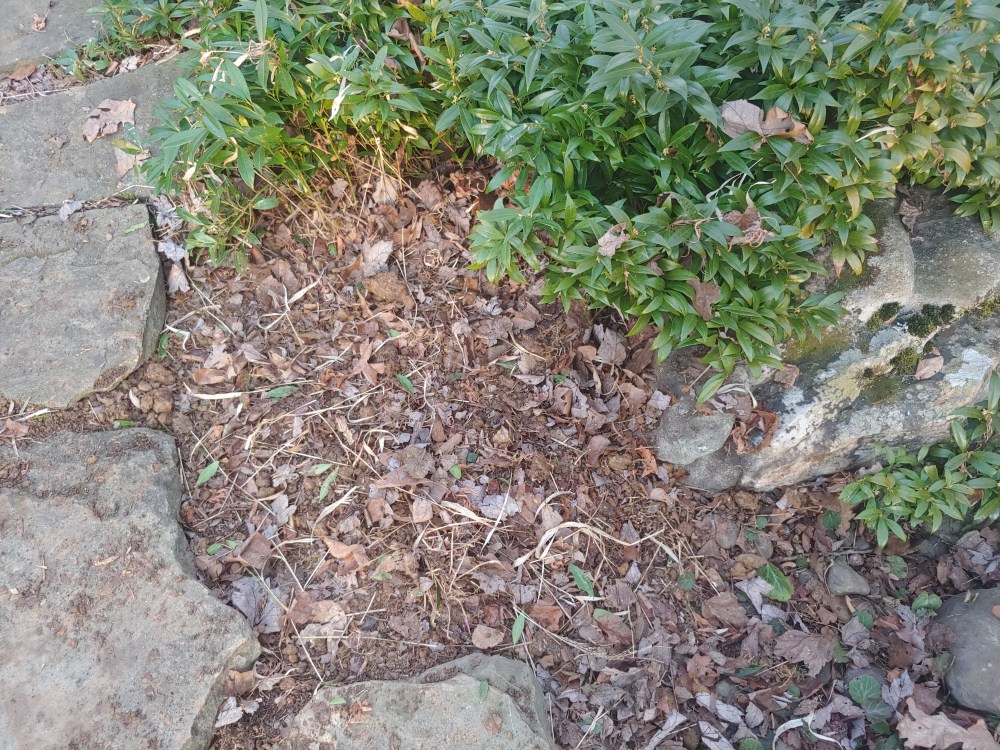
If the grass was to be saved, now was the time to do it, so a section of the sweetbox was dug into and transplanted. From start to finish this minor project took a half hour, with most time spent pulling as much of the wiry roots of the grass free from the dense sweetbox roots as could be saved. I didn’t figure either needed to be handled with care, and rough handling is what I do best and quickest. While this would have been better to have been done a year ago, before the sweetbox and Forest grass were intertwined, it’s done and two clumps of sweetbox have been moved elsewhere. This was a good weekend, and now I can go back to piddling, spending more time enjoying than laboring.
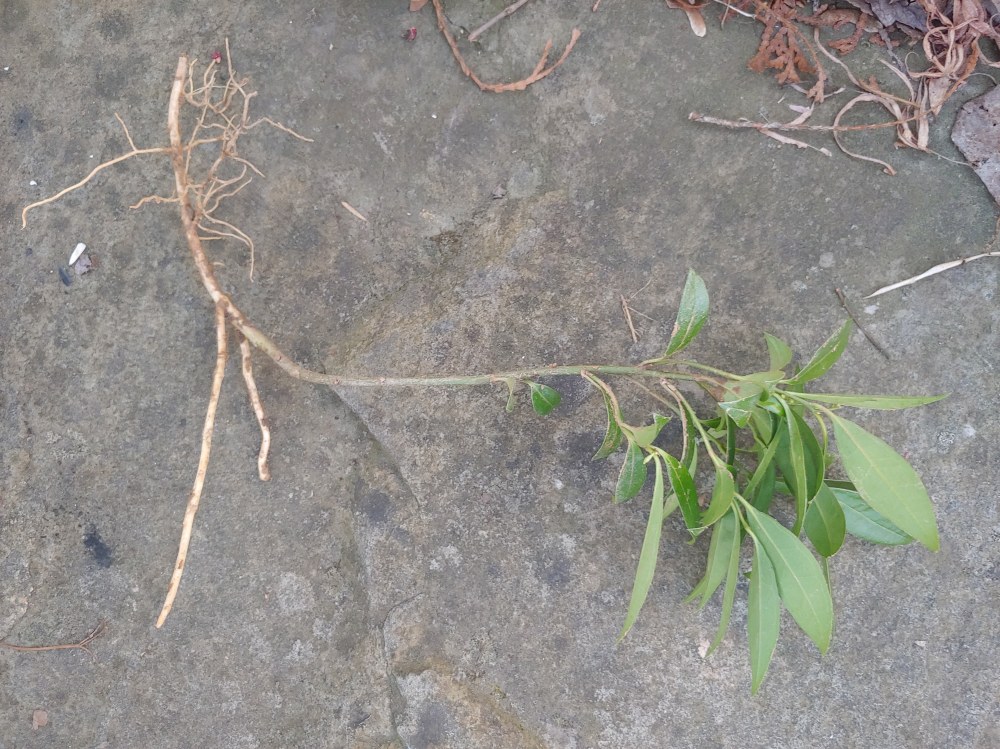
I saw you moved seedling hellebores at the end of January. When do you think is a good time to divide a large plant? I have one that I got from a grower as an unnamed seedling from his breeding program. It’s a nice double-flowered one and I’d like to have more. I have divided one successfully before, but it was years ago, before hellebores got so popular. I can’t remember what time of year I did it. Do you have a suggestion?
There are few plants tougher than hellebores. A bulky clump will be very resilient after dividing, but late winter, before flowering is the best time. While not ideal, if a division has substantial roots I would divide now if you don’t mind disturbing the appearance of a flowering plant at its peak.
That seems almost immoral, to divide them before bloom. It applies to SO many perennials though. Realistically, many are not too bothered by it. Technically, flowering cherry trees and flowering crabapples should be pruned while bare in winter; but some of us wait until after bloom, and after new foliage has matured a bit. It makes me cringe either way. I insist on pruning fruit trees, including fruiting cherries and fruiting apples, while bare in winter, . . . . but sometimes leave a few unpruned stems to bring in during bloom.